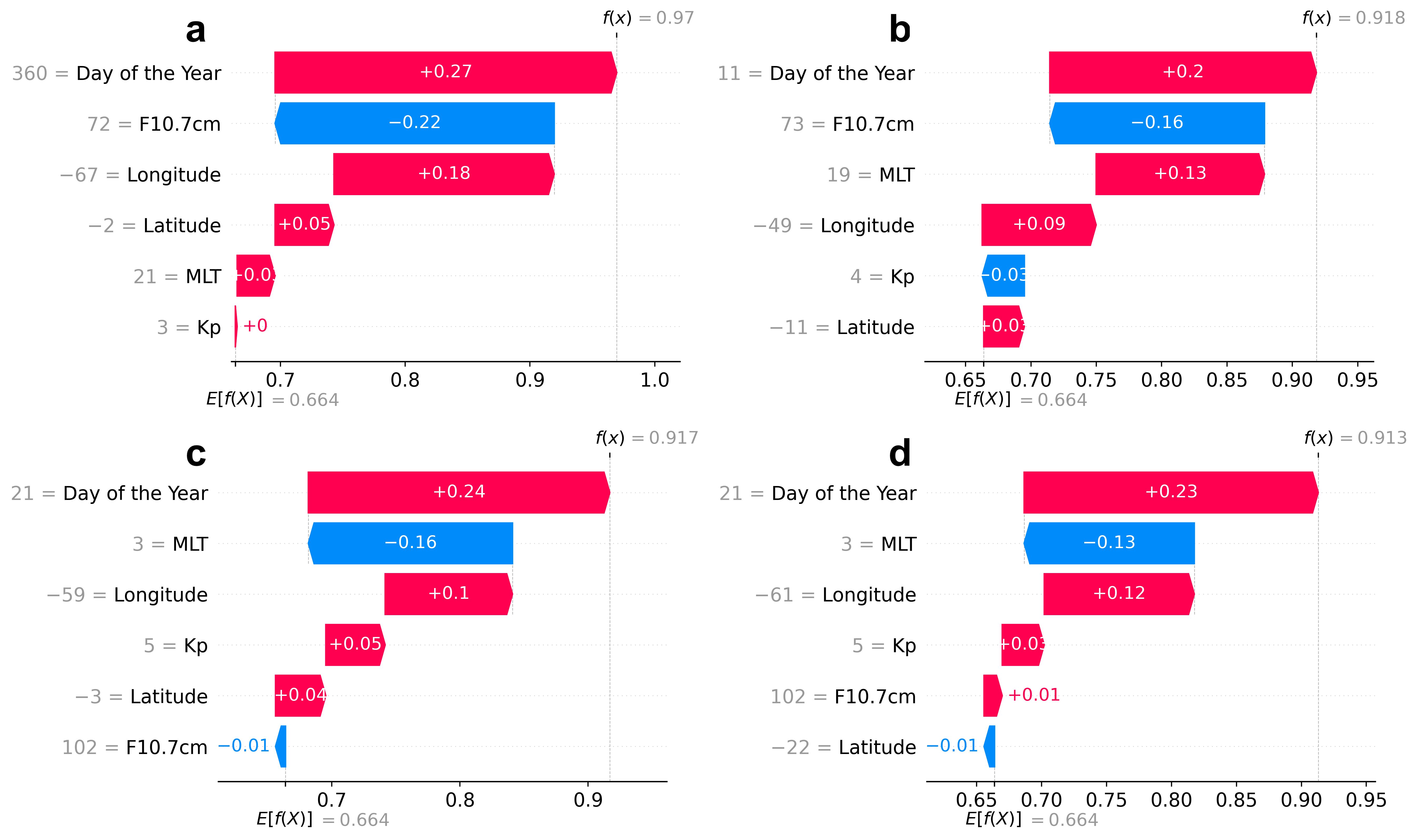MIST
Magnetosphere, Ionosphere and Solar-Terrestrial
Predicting Swarm Equatorial Plasma Bubbles via Machine Learning and Shapley Values
By Sachin Reddy (UCL Mullard Space Science Laboratory)
In the nightside ionosphere, plumes of low-density plasma known as Equatorial Plasma Bubbles (EPBs) are prone to form. EPBs can disrupt GNSS signals which depend on quiet ionospheric conditions, but the day-to-day variability of bubbles has made predicting them a considerable challenge. In this study we present AI Prediction of EPBs (APE), a machine learning model that accurately predicts the Ionospheric Bubble Index (IBI) on Swarm. IBI identifies EPBs by correlating (R2) a simultaneous change in the current density and magnetic field.
APE is XGBoost regressor that is trained on data from 2014-2022. It performs well across all metrics, exhibiting a skill, association, and root mean squared error score of 0.96/1, 0.98/1 and 0.08/0 respectively. APE performs best post-sunset, in the American/Atlantic sector, around the equinoxes, and when solar activity is high. This is promising because EPBs are most likely to occur during these periods.
Shapley Value analysis reveals that F10.7 is the most important feature, whilst latitude is the least. Bespoke indices may be required to fully capture the effects of geomagnetic activity which is known to both enhance and suppress EPB formation. The Shapley analysis also reveals that low solar activity, active geomagnetic conditions, and the Earth-Sun perihelion all contribute to an increased EPB likelihood. To the best of our knowledge, this is the first time this exact combination of features has been linked to bubble detection. This showcases the ability of Shapley values to enable new insights into EPB climatology and predictability.

See full paper for details: , , , , , , et al. (2023). Predicting swarm equatorial plasma bubbles via machine learning and Shapley values. Journal of Geophysical Research: Space Physics, 128, e2022JA031183. https://doi.org/10.1029/2022JA031183